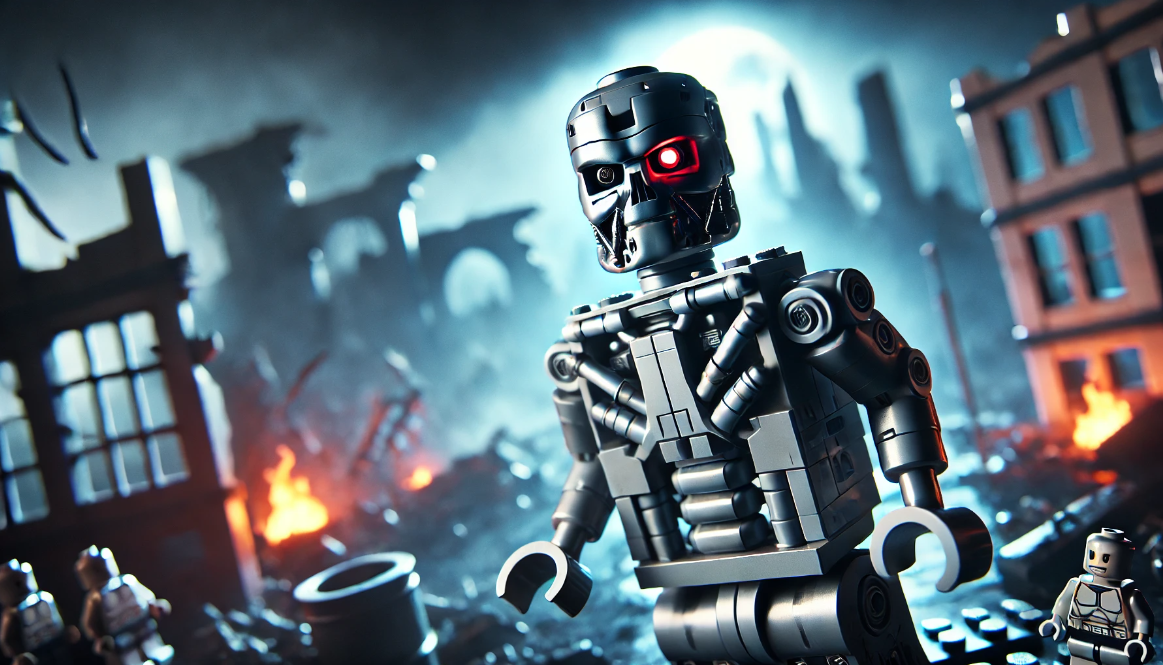Hasta la vista?! About how we picture AI

Ever searched for “AI” on a stock image site or even used an AI tool to generate an image of “AI”? I can’t help but noticing three recurring themes:
- robots that look like the Terminator
- hypersexualized “sexy” robots
- cute, cartoonish androids
It’s like we’re stuck in a loop, constantly cycling through the same old clichés. And it’s not just stock images; even AI-generated visuals tend to follow these patterns.
There are some deeper socio-cultural reasons behind the depiction of AI - capitalism’s love for familiar ideas, the way tech infantilizes users, and even outdated sexism. All of this is rooted in people’s fear of AI taking over, a fear that The Terminator helped cement. But now, with AI tools becoming accessible to nearly everyone, there’s an even bigger conversation around the kind of AI we’re building - models that threaten to change the workforce as we know it.
Visuals of the Terminator-style robot are instantly recognizable and pack a punch. The red-eyed robot is a symbol of the danger of AI and has become a kind of visual shorthand for artificial intelligence. This touches on a real fear: the idea that AI could surpass human control and, like in The Terminator, threaten humanity. While we’re not necessarily expecting killer robots to come for us (🫰🫰🫰), that image sticks with us, and it sells.
Even AI image generators, which should theoretically offer something new, fall back on these familiar tropes because they’re learning from the data we’ve already created. They scrape through millions of images online, and since our media and advertising spaces are already full of these familiar robots, they just reinforce them. AI reflects our existing biases and sells us back the same stories we’ve been telling for decades.
On the other side of the spectrum, we see another type of AI imagery - robots that are almost too cute. Big eyes, soft colors, and friendly, toy-like appearances. These images are designed to make AI seem approachable and harmless, a far cry from the intimidating robots of dystopian movies.
This is part of a bigger trend where tech companies work hard to present AI as a friendly, easy-to-use tool. By making AI look cute and non-threatening, they make the tech feel accessible, something anyone can use without needing to worry about the complexities behind it. This approach infantilizes users, making it seem like we don’t need to think too hard about what’s going on under the hood.
But AI isn’t a toy. It’s a powerful technology that’s already affecting jobs, privacy, and decision-making in ways that matter. When we constantly see AI depicted as a cute, harmless assistant, we stop asking the important questions about ethics, control, and long-term impacts. And AI-generated images, learning from these same visual cues, end up reinforcing this “friendly robot” narrative, even when the reality is far more complicated.
One of the most frustrating trends in AI visuals is the hypersexualized “sexy” robot. These robots are usually female-presenting, sleek, and designed with exaggerated features. You see this type of imagery not only in stock image libraries but also in AI-generated visuals, regardless which tools you use.
This societal issue persists in and reflects on tech. When AI is depicted as a hypersexualized female robot, it reinforces harmful ideas that women (or, in this case, feminized robots) exist to serve or entertain.
Even in our most futuristic visions, the “sexy robot” trope reflects a culture that still struggles to see women as equals in tech and innovation. Instead, they’re often depicted as objects of desire or subservience, reinforcing sexist stereotypes even in a space that should be about pushing boundaries and imagining new possibilities.
While most of us don’t actually expect robot overlords anytime soon, there’s a real fear behind this: that AI could grow beyond our control.
And now, we’re living in a time when that fear is starting to feel a little too close for comfort. AI isn’t just a cool futuristic idea anymore; it’s here, and it’s becoming more powerful every day. We now have large language models (LLMs), large action models (LAMs), and supposedly “reasoning” models that can automate processes we thought only humans could handle. These tools can write, code, create, analyze, and even make decisions - essentially doing more and more of what we thought only people could do.
This is where things get tricky. As AI becomes more accessible, available for nearly everyone to use and experiment with, we start to feel the pressure. Companies are adopting these tools at breakneck speed, and some of these models are already threatening to replace human jobs. AI is no longer just the future; it’s the present, and it’s here to stay.
The original fear—that AI could take over—might not look exactly like The Terminator, but it’s real. AI tools are already reshaping industries, changing the workforce, and shifting how we think about the future of work. And when you have AI creating images of AI, it’s no wonder we keep seeing these fear-based visuals pop up—they’re reflecting our very real concerns about AI’s role in society.
So, what’s the solution? It starts with how we think about and visualize AI. We need to break out of this loop and start demanding images that reflect the full complexity of AI - not just the dystopian, overly simplified, or hypersexualized versions we’ve been fed for decades. At least: stop using these images to to perpetuate the false narrative even further.
Published on:
Learn more